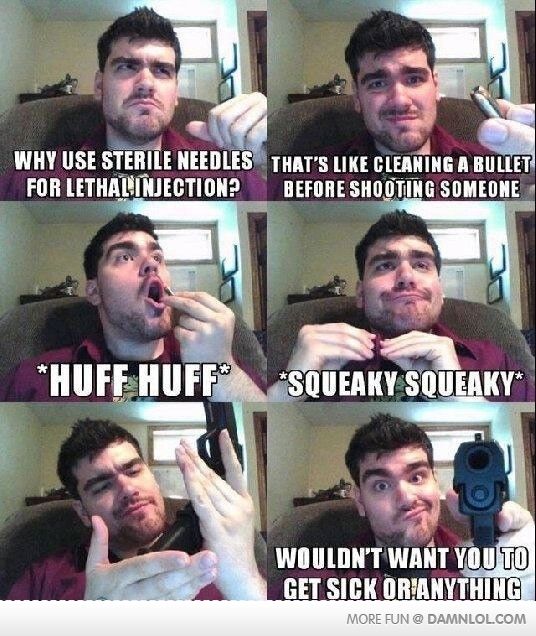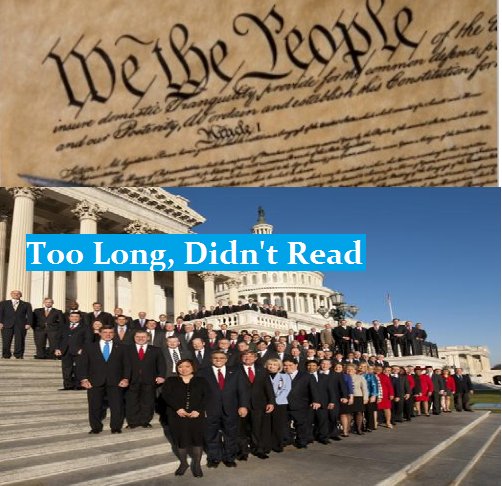-
As of today ICMag has his own Discord server. In this Discord server you can chat, talk with eachother, listen to music, share stories and pictures...and much more. Join now and let's grow together! Join ICMag Discord here! More details in this thread here: here.
You are using an out of date browser. It may not display this or other websites correctly.
You should upgrade or use an alternative browser.
You should upgrade or use an alternative browser.
- Status
- Not open for further replies.
The Male Cycle
(1) When I was 13, I hoped that one day I would have a girlfriend with big tits.
(2) When I was 16, I got a girlfriend with big tits, but there was no passion, so I decided I needed a passionate girl with zest for life.
(3) In college I dated a passionate girl, but she was too emotional. Everything was an emergency; she was a drama queen, cried all the time and threatened suicide. So I decided I needed a girl with stability.
(4) When I was 25, I found a very stable girl but she was boring. She was totally predictable and never got excited about anything. Life became so dull that I decided I needed a girl with some excitement.
(5) When I was 28, I found an exciting girl, but I couldn't keep up with her. She rushed from one thing to another, never settling on anything. She did mad impetuous things and made me miserable as often as happy. She was great fun initially and very energetic, but directionless. So I decided to find a girl with some real ambition.
(6) When I turned 30, I found a smart ambitious girl with her feet planted firmly on the ground, so I married her. She was so ambitious that she divorced me and took everything I owned.
I am older and wiser now, and I am looking for a girl with big tits.
(1) When I was 13, I hoped that one day I would have a girlfriend with big tits.
(2) When I was 16, I got a girlfriend with big tits, but there was no passion, so I decided I needed a passionate girl with zest for life.
(3) In college I dated a passionate girl, but she was too emotional. Everything was an emergency; she was a drama queen, cried all the time and threatened suicide. So I decided I needed a girl with stability.
(4) When I was 25, I found a very stable girl but she was boring. She was totally predictable and never got excited about anything. Life became so dull that I decided I needed a girl with some excitement.
(5) When I was 28, I found an exciting girl, but I couldn't keep up with her. She rushed from one thing to another, never settling on anything. She did mad impetuous things and made me miserable as often as happy. She was great fun initially and very energetic, but directionless. So I decided to find a girl with some real ambition.
(6) When I turned 30, I found a smart ambitious girl with her feet planted firmly on the ground, so I married her. She was so ambitious that she divorced me and took everything I owned.
I am older and wiser now, and I am looking for a girl with big tits.

Where does the 1.3% addiction rate statistic come from?
One of the challenges of evaluating America’s system of drug prohibition is tracking down and assembling the raw data that comes from various entities. Since I am are most interested in what has been done in the name of combatting illicit drugs, alcohol being perfectly legal and regulated, I’ve focused on the dependency rates solely for illicit drugs, ignoring dependency rates for both alcohol alone and alcohol + illicit drugs (as it stands to reason those dependencies would default to only alcohol in the absence of illicit drugs). What we find is a relatively constant 1.3% of Americans dependent on illicit drugs. Here you can see the data for 2002-2010 which shows approximately 1.3% of the population addicted to illicit drugs . Earlier data is difficult to find and link to online, though the National Survey on Drug Use and Health is the primary data source for this information.
How does the chart add up to $1.5 trillion?
A few astute viewers have noted that at its peak spending, the chart I’ve included only hits approximately $20 billion, which extrapolated over 40 years would yield only $800 billion. Yet we can clearly see that the chart itself is not flat at the $20B level, but climbs sharply beginning in the mid 1980s. So in short, the chart, as shown, does not add up to $1.5 trillion.
So why did I do this? This graphic was initially not meant to stand on its own but rather illustrate an interviewee’s assertions about the costs and efficacy of drug prohibition. In a tight production schedule, I utilized a data set that I thought most accurately illustrated the nature and growth of the costs of the War on Drugs and that data is US federal drug control spending. But the $1.5 trillion figure, as mentioned by Jack Cole in his interview, accounts for many more costs, including state level costs, prison costs, lost productivity costs due to incarceration and others. I trust Jack’s estimate of $1.5 trillion after a quick review of the ONDCP report from 2004 gave me confidence that he was right on the money. You can check out the ONDCP’s The Economic Costs of Drug Abuse in the United States, 1992-2002
hate to "pull a LEF" and comment in the pics thread, but find a girl that you can get along with then feed her some fenugreek seed. bam.
it's alright, you don't owe me a thing, bro. just pass it on so that we can give the implant industry a big ass middle finger fuck you.
edit - you posted again. forget tits, girl in the skirt.
it's alright, you don't owe me a thing, bro. just pass it on so that we can give the implant industry a big ass middle finger fuck you.
edit - you posted again. forget tits, girl in the skirt.
[youtubeif]srLjIZK2y_8[/youtubeif]
- Status
- Not open for further replies.




















